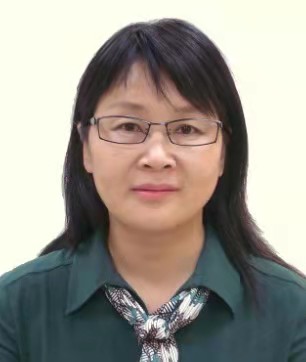Professor Li Weiying has long been engaged in the research on the theory and technology of drinking water safety and the evaluation and control technology of water quality bio-safety in water supply system. Professor presided over and complete the national natural science fund projects, the national water pollution control and management of science and technology major projects male Ann district urban water system building and safety technology research corpus zx07110 (2018-008-04), Chinese Academy of Engineering major consulting research project (2019 - CQ - lh-zd - 1), the period of "11th five-year plan" key project of national science and technology support plan baj08b02 (2006), the state Ministry of Science and Technology & science and technology commission of Shanghai world expo science and technology projects (07 dz05804-05 and 06 dz05819), Suzhou science major branch of science and technology Support project (ZS0801), Science and technology research project of Shanghai Chengtou Water (Group) Co., LTD., and many other national and provincial projects.
Major Academic Papers:
1. Identification the source of fecal contamination for geographically unassociated samples with a statistical classification model based on support vector machine [J]. Journal of Hazardous Materials, 2021, 407: 124821
2. Effective removal of fluorescent microparticles as Cryptosporidium parvum surrogates in drinking water treatment by metallic membrane. Journal of Membrane Science, 2020, 594, (SCI)
3. Impact of substrate material and chlorine/chloramine on the composition and function of a young biofilm microbial community as revealed by high-throughput 16S rRNA sequencing. Chemosphere, 2019, 242, 125-137 (SCI)
4. Impact of biofilm formation and detachment on the transmission of bacterial antibiotic resistance in drinking water distribution systems. Chemosphere, 2018, 203, 368-380. (SCI)
5. Effect of disinfectant residual on the interaction between bacterial growth and assimilable organic carbon in a drinking water distribution system. Chemosphere, 2018, 202, 586-597. (SCI)
6. Characterization of suspended bacteria from processing units in an advanced drinking water treatment plant of China, Environmental Science and Pollution Research, 2017, 24(13), 12176-12184. (SCI)
7. Exploring the biological stability situation of a full scale water distribution system in south China by three biological stability evaluation methods, Chemosphere, 2016, 161: 43-52. (EI & SCI)
8. Community shift of biofilms developed in a full-scale drinking water distribution system switching from different water sources, Science of The Total Environment,2016, 544: 499-506. (EI & SCI)
9. Photocatalytic degradation of MC-LR in water by the UV/TiO2/H2O2 process, Water Science & Technology Water Supply, 2016, 16(1): 34-43. (SCI)
10. Two-phase anaerobic co-digestion of food waste and sewage sludge, Water Science and Technology, 2015, 71(1): 52-58. (EI & SCI)
11. Study on the variation rules of the joint effects for multicomponent mixtures containing cyanogenic toxicants and aldehydes based on the transition state theory. Journal of Hazardous Materials. 2014. 267 (2): 98–108 (SCI)
12. Preparation and characterization of poly (vinylidene fluoride)/TiO2 hybrid membranes. Frontiers of Environmental Science & Engineering. 2013, 7(4): 492-502 (SCI)
13. Photocatalytic activity enhancement of TiO2 porous thin film due to homogeneous surface modification of RuO2. Journal of Materials Research. 2011, 26, (12): 1532-1538 (SCI)
14. Photocatalytic Activity of Hetero structures Based on ZnO and N-doped ZnO. ACS Applied Materials & Interfaces. 2011, (3): 3152–3156 (SCI)
15. Study on backwash wastewater from rapid sand-filter by monolith ceramic membrane. Desalination. 2010, 250(2): 712-715 (EI & SCI)
16. Binding of reactive brilliant red to human serum albumin: insights into the molecular toxicity of sulfonic azo dyes. Protein & Peptide Letters. 2010, 17: 621-629 (EI & SCI)
17. Preparation of calcium alginate sorbent supporting the BaSO4-APRB hybrid and application to clean dye waste. Journal of Food, Agriculture & Environment. 2010, 8(2): 956 - 961 (EI & SCI)
18. A New Effect Residual Ratio (ERR) Method for the Validation of the Concentration Addition and Independent Action Models. Environmental Science and Pollution Research. 2010, 17: 1080-1089 (SCI)



 中文
中文 Tel 021-65983869
Tel 021-65983869 Wechat
Wechat






 Professor
Professor
 Associate Professor
Associate Professor



